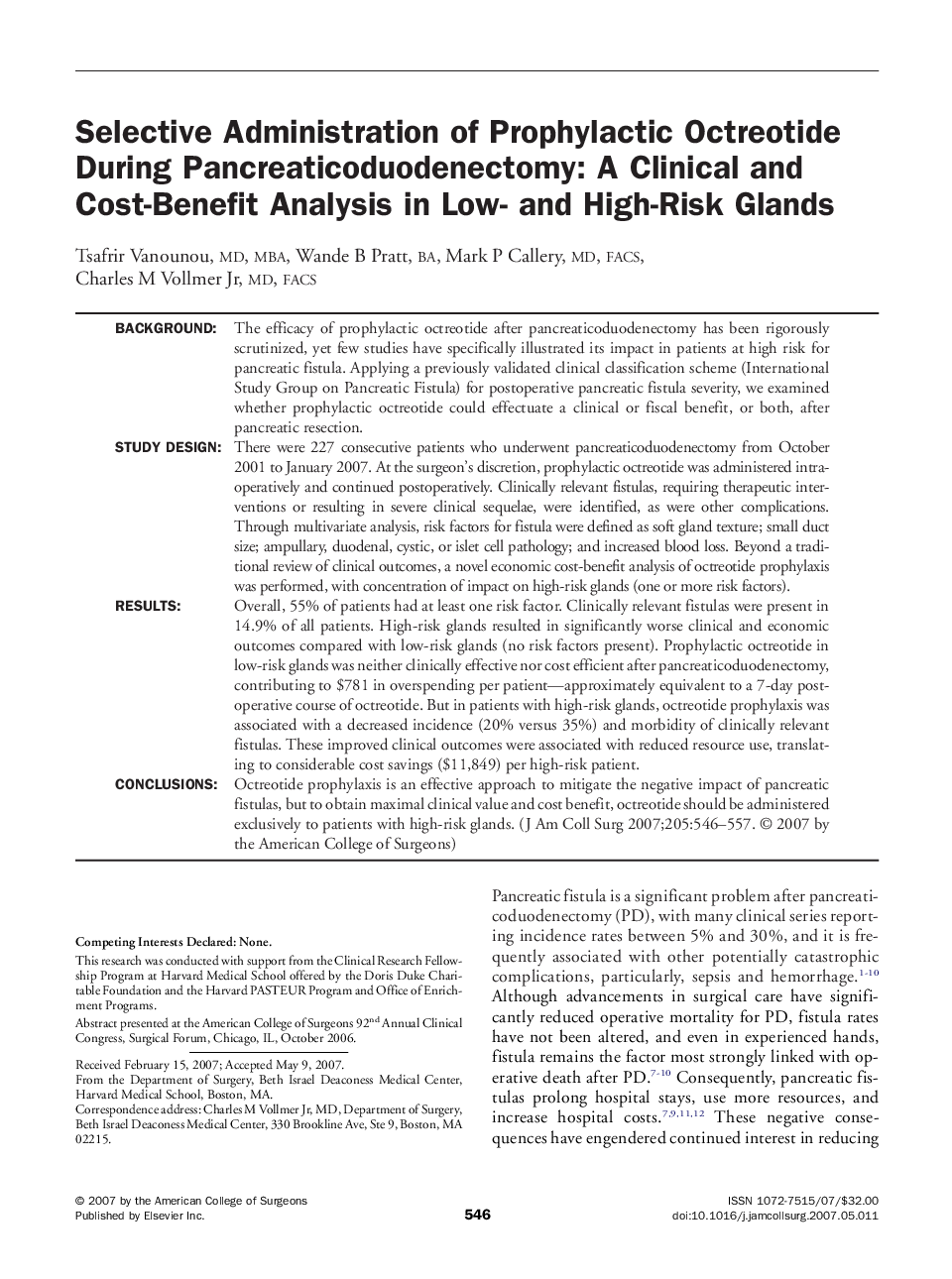| کد مقاله | کد نشریه | سال انتشار | مقاله انگلیسی | نسخه تمام متن |
|---|---|---|---|---|
| 4295401 | 1612319 | 2007 | 12 صفحه PDF | دانلود رایگان |

BackgroundThe efficacy of prophylactic octreotide after pancreaticoduodenectomy has been rigorously scrutinized, yet few studies have specifically illustrated its impact in patients at high risk for pancreatic fistula. Applying a previously validated clinical classification scheme (International Study Group on Pancreatic Fistula) for postoperative pancreatic fistula severity, we examined whether prophylactic octreotide could effectuate a clinical or fiscal benefit, or both, after pancreatic resection.Study DesignThere were 227 consecutive patients who underwent pancreaticoduodenectomy from October 2001 to January 2007. At the surgeon’s discretion, prophylactic octreotide was administered intraoperatively and continued postoperatively. Clinically relevant fistulas, requiring therapeutic interventions or resulting in severe clinical sequelae, were identified, as were other complications. Through multivariate analysis, risk factors for fistula were defined as soft gland texture; small duct size; ampullary, duodenal, cystic, or islet cell pathology; and increased blood loss. Beyond a traditional review of clinical outcomes, a novel economic cost-benefit analysis of octreotide prophylaxis was performed, with concentration of impact on high-risk glands (one or more risk factors).ResultsOverall, 55% of patients had at least one risk factor. Clinically relevant fistulas were present in 14.9% of all patients. High-risk glands resulted in significantly worse clinical and economic outcomes compared with low-risk glands (no risk factors present). Prophylactic octreotide in low-risk glands was neither clinically effective nor cost efficient after pancreaticoduodenectomy, contributing to $781 in overspending per patient—approximately equivalent to a 7-day postoperative course of octreotide. But in patients with high-risk glands, octreotide prophylaxis was associated with a decreased incidence (20% versus 35%) and morbidity of clinically relevant fistulas. These improved clinical outcomes were associated with reduced resource use, translating to considerable cost savings ($11,849) per high-risk patient.ConclusionsOctreotide prophylaxis is an effective approach to mitigate the negative impact of pancreatic fistulas, but to obtain maximal clinical value and cost benefit, octreotide should be administered exclusively to patients with high-risk glands.
Journal: Journal of the American College of Surgeons - Volume 205, Issue 4, October 2007, Pages 546–557